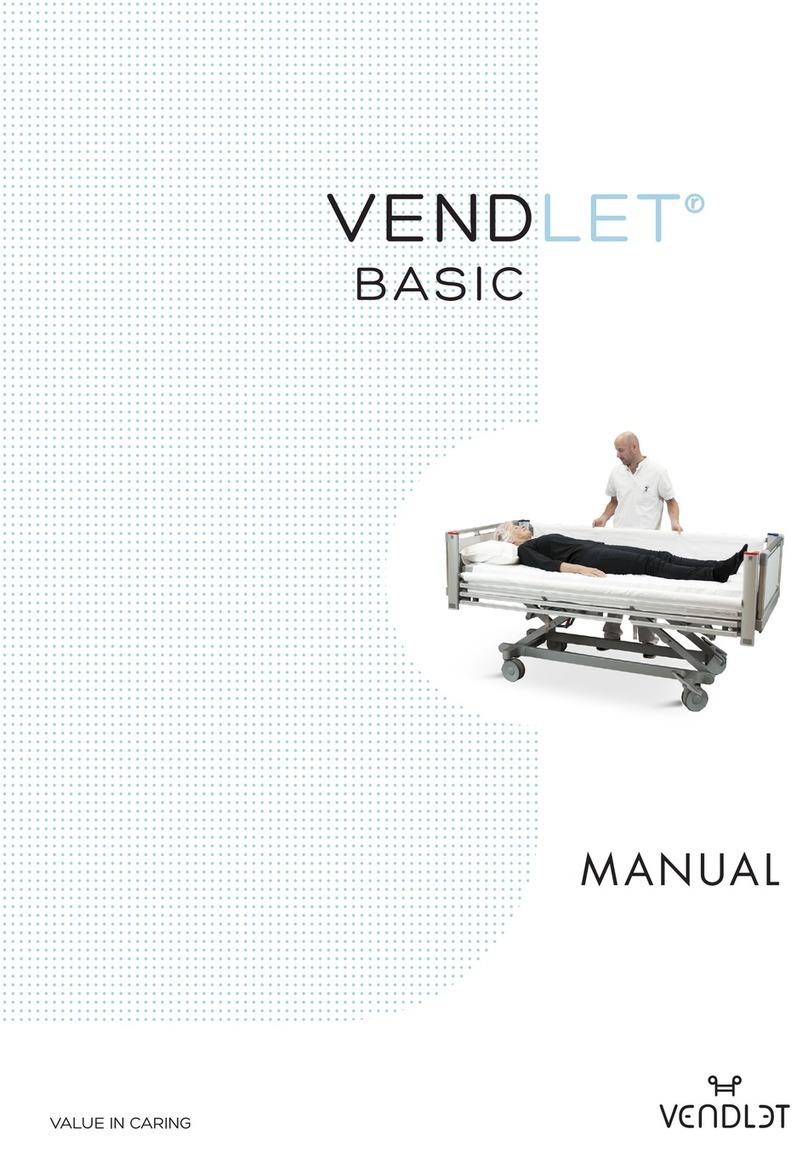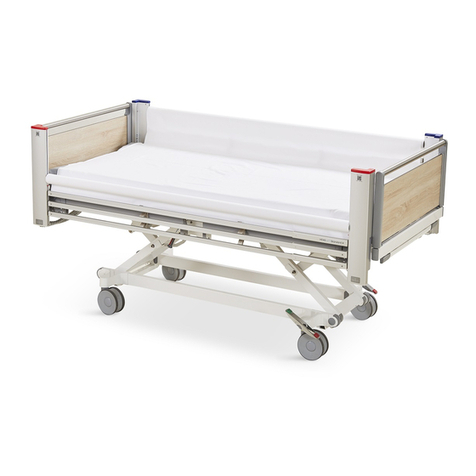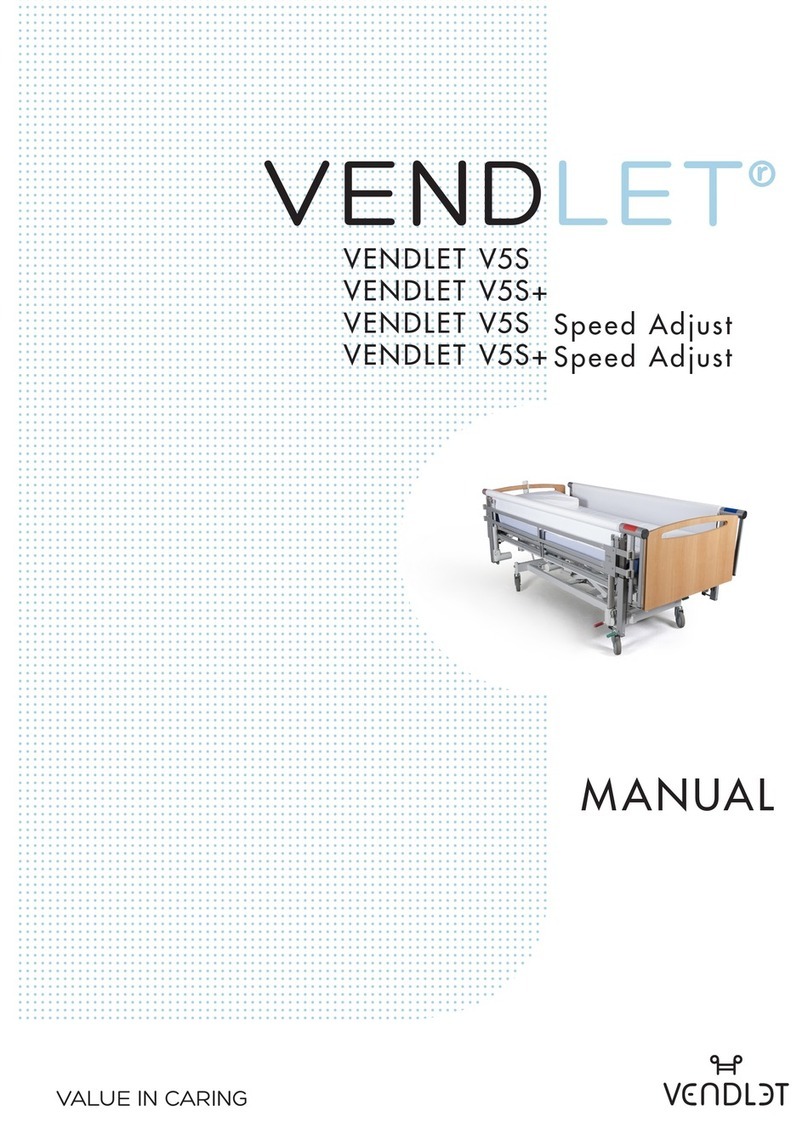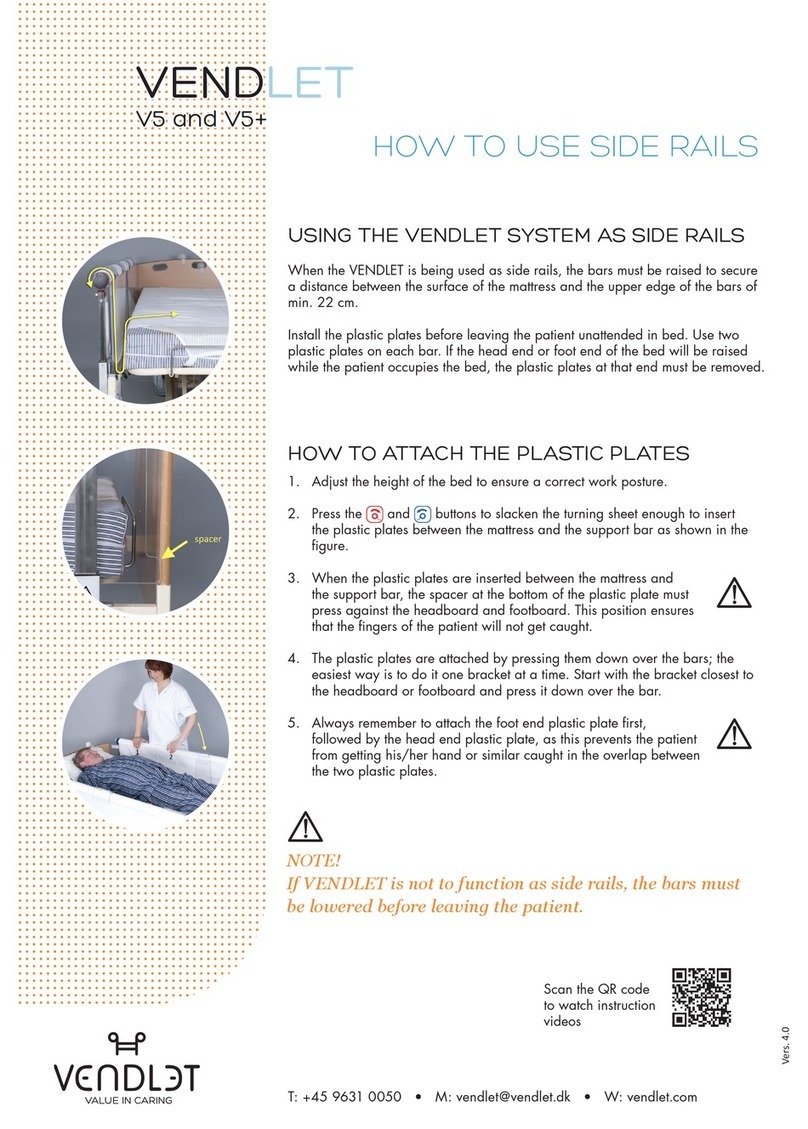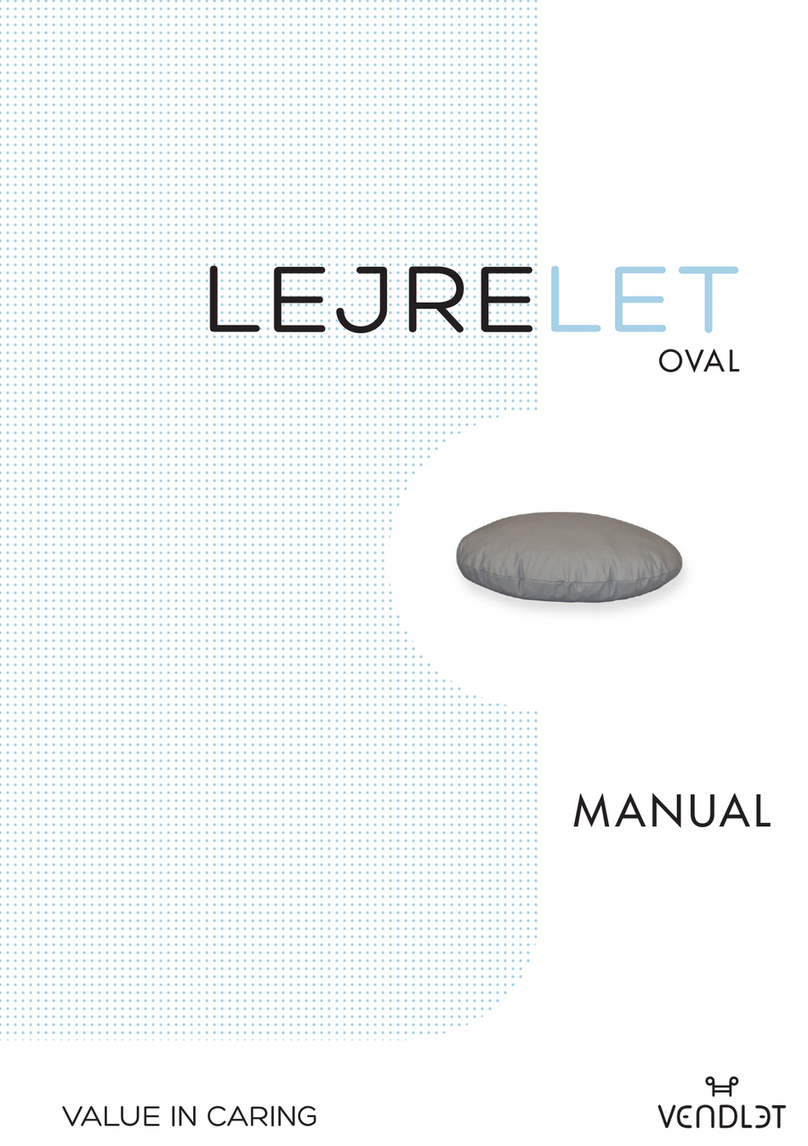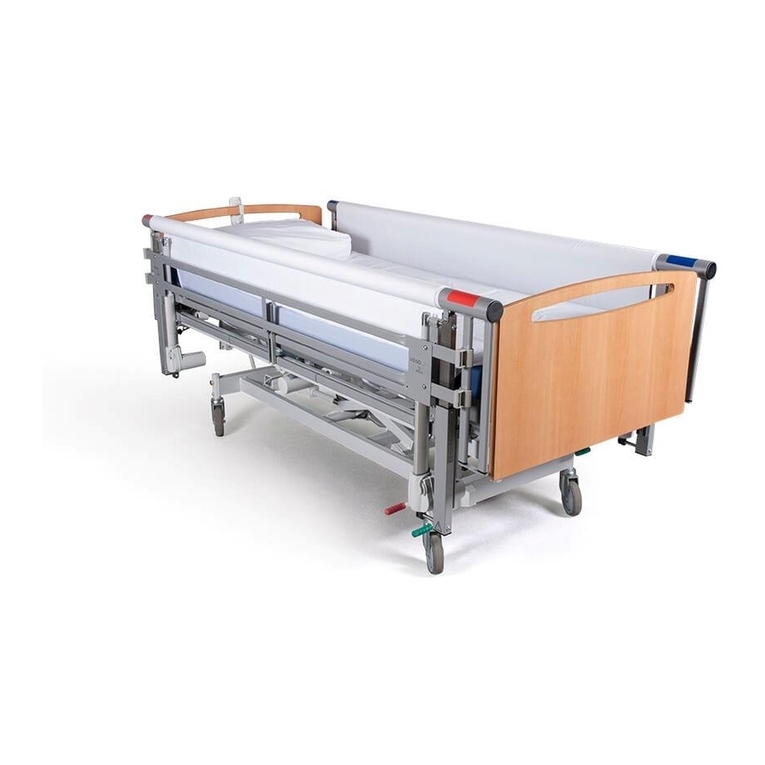
PART 1 - General information
7
The VENDLET may be used for moving clients to a lateral, prone, or supine posion,
from one side of the bed to the other, or, to reposion them further up in bed. The
VENDLET may also be used in connecon with mobilisaon in and out of bed and
when transferring clients from one bed to another.
The VENDLET protects the caregiver from physical strain and heavy liing in connec-
on with the handling of immobile clients. Clients are turned/handled by pressing a
hand control whereby the caregiver may support a client and ensure their correct
and comfortable posioning. This provides room for increased awareness in the care,
which boosts employee job sasfacon and client well-being.
To the client, the turning process becomes uniform and steady as the sheet
supports the body over its full length.
The target group is clients who are being cared for, dressed, washed etc. in bed. This
will oen be clients who are lied in and out of bed or clients who are mobilised
using a standing aid. Hence, the user will typically be clients with few physical and/or
cognive resources and palliave clients.
The VENDLET is also suitable for clients at risk of developing pressure ulcers in that
the uniform and steady transfer in the sheet minimises fricon and the associated
shear that can damage the ssue and cause pressure ulcers. Furthermore, the
VENDLETs oen seem to have a posive eect on clients suering from spaal aware-
ness.
The VENDLET is intended for clients weighing at least 30 kg.
VENDLET V5S / VENDLET V5S Speed Adjust has a load capacity of max. 200 kg.
VENDLET V5S+ / VENDLET V5S+ Speed Adjust has a load capacity of 400 kg.
The target group for these is bedridden bariatric clients / paents.
Prior to the rst use of the VENDLET, it is important to assess whether the VENDLET is
suitable for the client in queson. It may be necessary to take special precauons, for
example if a client is very restless in bed or has an untypical anatomy.
For safety reasons, it is recommended that the VENDLET is not operated by the bed-
ridden person. Deviaon from this requires a risk assessment made by the responsi-
ble healthcare professional. The risk assessment should evaluate the clients physical,
cognive and palliave resources. The risk assessment must be available by the bed
and must be updated on a regular basis. Vendlet cannot be held responsible for the
risk assessment or conclusions based on this.
